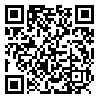BibTeX | RIS | EndNote | Medlars | ProCite | Reference Manager | RefWorks
Send citation to:
URL: http://ijn.iums.ac.ir/article-1-1346-en.html
A field study was conducted in Semnan to measure the vaccination coverage rate in children from birth to 24
months and correlate the outcome with personal family and social characteristics of the subjects in 1372 (1994).
A total of 210 children below the age of 24 months, living in Semnan were selected randomly from thirty district
points of the town .
To gather the data a two section questionnaire was developed. The first part covered items on age, set, birth
place ( rural or urban ), order of birth, birth weight, having acquired illnesses like whooping cough, or history of
high fever and convulsions or epilepsy. Also where and how the vaccination took place and it's side effects were
recorded:
The second section posed questions on family and social characteristics, like parents, age, education and
occupation, family size and structure (nuclear or extended), mother's age at marriage also her age at delivery of the
subject baby, number of live births she had, vaccination side effects noticed in the siblings, duration at residency in
Semnan being natives or immigrants to the town, the distance from home to the nearest vaccination center and the
means of transport to that place.
Further, the subjects vaccination record was reviewed and the coverage categorized in three orders: vaccination
complete for age, incomplete for age, not vaccinated.
The criteria for complete vaccination were set according to the Ministry of Health and Medical Sciences
Education manual distributed to all vaccination centers.
The findings revealed a coverage rate of 91.9% at birth, 79.48% at 1.5 months, 7267% at three, 56.79% at
four, 65.9 at nine and 60% at 15 months and above (up to 24 months ), thus a gradual decrease of vaccination
coverage was obvious.
To correlate these findings with personal family and social characteristics of the subjects, the x2 statistical rest
was employed . The only significant relation found was between vaccination at birth and 1.5 months with the
subjects' birth place (p=0.0l6, p=0.02I).
In conclusion suggestions were made for implementing corrective measures and further research.| Rights and permissions | |
 |
This work is licensed under a Creative Commons Attribution-NonCommercial 4.0 International License. |




